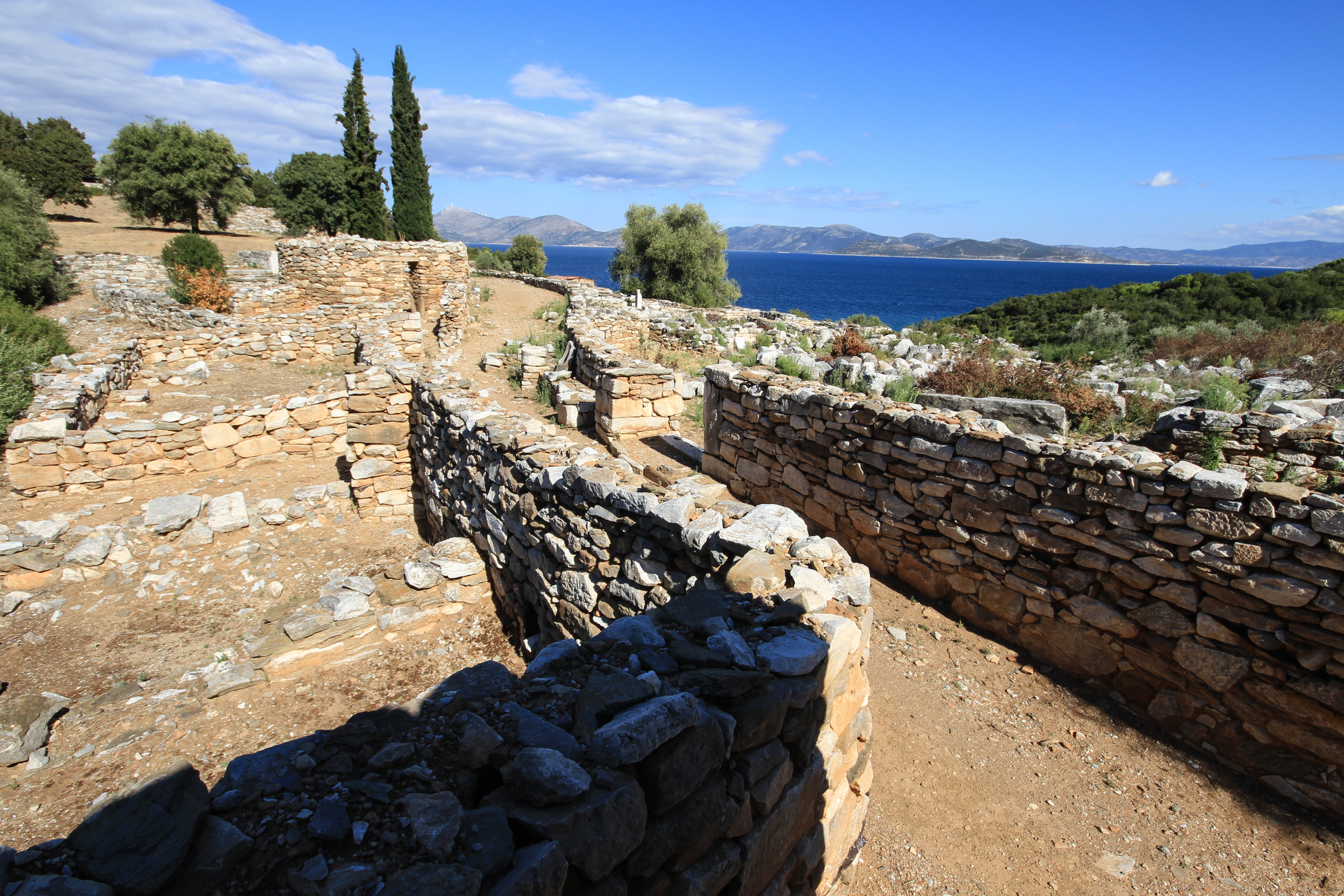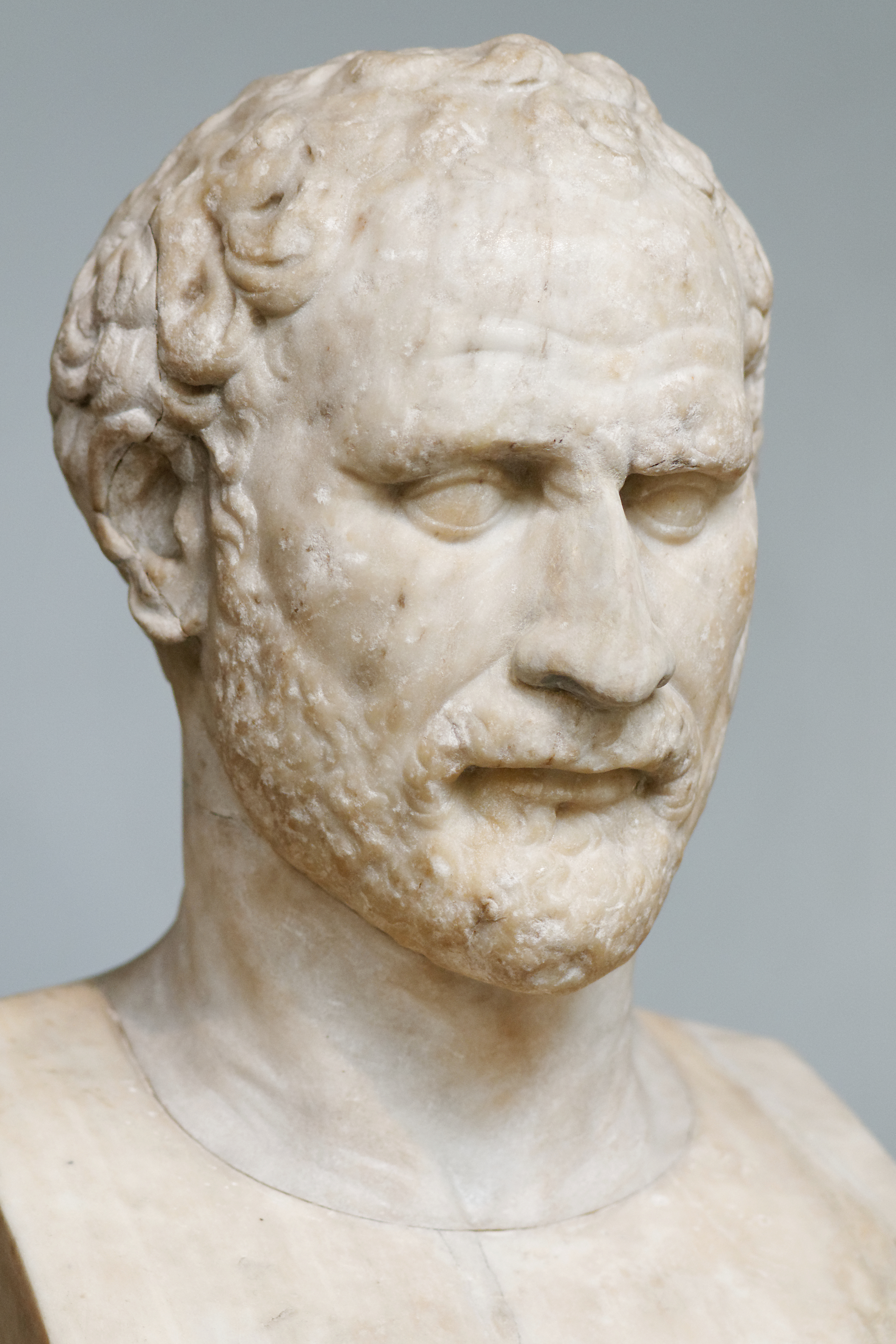|
Rhamnous
Rhamnous (; ), also Ramnous or Rhamnus, was an ancient Greek city in Attica situated on the coast, overlooking the Euboean Strait. Its ruins lie northwest of the modern town of Agia Marina in the municipality of Marathon. The site was best known in antiquity for its sanctuary of Nemesis, the implacable avenging goddess, her most important in ancient Greece. Rhamnous is the best-preserved Attic deme site. It was strategically significant on the sea routes and was fortified with an Athenian garrison of '' ephebes'' (young men). A fortified acropolis dominates the two small harbours located on either side of it which have silted up extensively since antiquity, and into which grain was imported for Athens during the Peloponnesian War. It derived its name from Buckthorn, a thick prickly shrub, which still grows upon the site. Location Rhamnus was situated on the east coast of Attica. The town occupied a small plain 3 miles (5 km) wide, atop a rocky peninsula surrounded b ... [...More Info...] [...Related Items...] OR: [Wikipedia] [Google] [Baidu] |
Nemesis
In ancient Greek religion and myth, Nemesis (; ) also called Rhamnousia (or Rhamnusia; ), was the goddess who personified retribution for the sin of hubris: arrogance before the gods. Etymology The name ''Nemesis'' is derived from the Greek word , ''némein'', meaning "to give what is due", from Proto-Indo-European *''nem-'' "distribute". Family According to Hesiod's ''Theogony'', Nemesis was one of the children of Nyx alone. Nemesis has been described as the daughter of Oceanus, Erebus, or Zeus, but according to Hyginus she was a child of Erebus and Nyx. Some made her the daughter of Zeus by an unnamed mother. In several traditions, Nemesis was seen as the mother of Helen of Troy by Zeus, adopted and raised by Leda and Tyndareus. According to the Byzantine poet Tzetzes, Bacchylides had Nemesis as the mother of the Telchines by Tartarus. Mythology Fortune and retribution The word ''nemesis'' originally meant the distributor of fortune, neither good nor bad ... [...More Info...] [...Related Items...] OR: [Wikipedia] [Google] [Baidu] |
Aeantis
Aiantis () was a phyle of ancient Attica with six demes: Aphidna, Marathon, Oenoe, Rhamnous, Tricorythus and Phalerum. It was named in honour of Ajax the Great. Marathon is located within the boundaries of this place. It is attested by Plutarch that fifty-two members of the tribe of Aiantis died from wounds sustained in the Battle of Plataea. The playwright Aeschylus came from deme Eleusis in Aiantis. His family were eupatrid The Eupatridae (literally "good fathered", i.e. "offspring of noble fathers" or "the well-born") were the ancient nobility of the Greek region of Attica. Origin Tradition ascribes to Theseus, whom it also regards as the author of the union (''syn ...s.(edited by FN MagillThe Ancient World: Dictionary of World Biography, Volume 1Routledge, 16 Dec 2003 etrieved 2015-04-18/ref> References Ancient tribes in Attica {{AncientGreece-stub ... [...More Info...] [...Related Items...] OR: [Wikipedia] [Google] [Baidu] |
Attica
Attica (, ''Attikḗ'' (Ancient Greek) or , or ), or the Attic Peninsula, is a historical region that encompasses the entire Athens metropolitan area, which consists of the city of Athens, the capital city, capital of Greece and the core city of the metropolitan area, as well as its surrounding suburban cities and towns. It is a peninsula projecting into the Aegean Sea, bordering on Boeotia to the north and Megaris to the west. The southern tip of the peninsula, known as Laurion, Lavrio, was an important Mines of Laurion, mining region. The history of Attica is closely linked with that of Athens. In ancient times, Attica corresponded with the Athens city-state. It was the most prominent region in Ancient Greece, specifically during the Golden Age of Athens in the Classical Greece, classical period. Classical Athens, Ancient Attica (the classical Classical Athens, Athens city-state) was divided into deme, demoi, or municipalities, from the reform of Cleisthenes in 508/7 BC, gr ... [...More Info...] [...Related Items...] OR: [Wikipedia] [Google] [Baidu] |
Rhamnus MapEN
Rhamnus may refer to: * Rhamnus (city), or Rhamnous, an ancient Greek city in Attica * Rhamnus (Crete), or Rhamnous, an ancient Greek town in Crete * Rhamnus, an augur killed by Nisus and Euryalus in book IX of The Aeneid The ''Aeneid'' ( ; or ) is a Latin epic poem that tells the legendary story of Aeneas, a Trojan who fled the fall of Troy and travelled to Italy, where he became the ancestor of the Romans. Written by the Roman poet Virgil between 29 and ... * ''Rhamnus'' (plant) or buckthorns, a plant genus * 9316 Rhamnus, a main-belt asteroid discovered in 1988 * Mount Rhamnus, a mountain in Antarctica {{disambiguation, geo ... [...More Info...] [...Related Items...] OR: [Wikipedia] [Google] [Baidu] |
Deme
In Ancient Greece, a deme or (, plural: ''demoi'', δήμοι) was a suburb or a subdivision of Classical Athens, Athens and other city-states. Demes as simple subdivisions of land in the countryside existed in the 6th century BC and earlier, but did not acquire particular significance until the reforms of Cleisthenes in 508 BC. In those reforms, enrollment in the citizen-lists of a deme became the requirement for citizenship; prior to that time, citizenship had been based on membership in a phratry, or family group. At this same time, demes were established in the main city of Athens itself, where they had not previously existed; in all, at the end of Cleisthenes' reforms, Classical Athens, Athens was divided into 139 demes., Three other demes were created subsequently: Berenikidai (224/223 BC), Apollonieis (201/200 BC), and Antinoeis (AD 126/127). The establishment of demes as the fundamental units of the state weakened the ''genos, gene'', or aristocratic family groups, that ... [...More Info...] [...Related Items...] OR: [Wikipedia] [Google] [Baidu] |
Remains Of The Ancient City Of Rhamnous On July 22, 2020
Remains or The Remains may refer to: Music *The Remains (band), a 1960s American rock band *The Ramainz, originally The Remains, a Ramones tribute band Albums *Remains (Alkaline Trio album), ''Remains'' (Alkaline Trio album), 2007 *Remains (Annihilator album), ''Remains'' (Annihilator album), 1997 *Remains (The Only Ones album), ''Remains'' (The Only Ones album), 1984 *Remains (Steve Lacy album), ''Remains'' (Steve Lacy album) or the title song, 1992 *The Remains (album), ''The Remains'' (album), by the Remains, 1966 *''Remains'', by Bella Morte, 1997 Songs *Remains (song), "Remains" (song), by Maurissa Tancharoen and Jed Whedon, 2009 *"Remains", by Charlotte Church from ''Three (Charlotte Church EP), Three'', 2013 *"Remains", by Zola Jesus from ''Okovi'', 2017 Other uses *Remains (comics), ''Remains'' (comics), a 2004 comic book series by Steve Niles and Kieron Dwyer **Remains (film), ''Remains'' (film), a 2011 American horror film based on the comic book series *The Remains ... [...More Info...] [...Related Items...] OR: [Wikipedia] [Google] [Baidu] |
Periplus Of Pseudo-Scylax
The ''Periplus of Pseudo-Scylax'' is an ancient Greek periplus (περίπλους ''períplous'', 'circumnavigation') describing the sea route around the Mediterranean and Black Sea. It probably dates from the mid-4th century BC, specifically the 330s, and was probably written at or near Athens. Its author is often included among the ranks of 'minor' Greek geographers. There is only one manuscript available, which postdates the original work by over 1500 years. The author's name is written Pseudo-Scylax or Pseudo-Skylax, often abbreviated as Ps.-Scylax or Ps.-Skylax. Author The only extant, medieval manuscript names the author as "Scylax"' (or "Skylax"), but scholars have proven that this attribution is to be treated as a so-called " pseudepigraphical appeal to authority": Herodotus mentions a Scylax of Caryanda, a Greek navigator who in the late sixth century BC explored the coast of the Indian Ocean on behalf of the Persians.Herodotus. ''Histories'', 4.44. Many details in t ... [...More Info...] [...Related Items...] OR: [Wikipedia] [Google] [Baidu] |
Demosthenes
Demosthenes (; ; ; 384 – 12 October 322 BC) was a Greek statesman and orator in ancient Athens. His orations constitute a significant expression of contemporary Athenian intellectual prowess and provide insight into the politics and culture of ancient Greece during the 4th century BC. Demosthenes learned rhetoric by studying the speeches of previous great orators. He delivered his first judicial speeches at the age of 20, in which he successfully argued that he should gain from his guardians what was left of his inheritance. For a time, Demosthenes made his living as a professional speechwriter ( logographer) and a lawyer, writing speeches for use in private legal suits. Demosthenes grew interested in politics during his time as a logographer, and in 354 BC he gave his first public political speeches. He went on to devote his most productive years to opposing Macedon's expansion. He idealized his city and strove throughout his life to restore Athens' suprema ... [...More Info...] [...Related Items...] OR: [Wikipedia] [Google] [Baidu] |
First Persian Invasion Of Greece
The first Persian invasion of Greece took place from 492 BC to 490 BC, as part of the Greco-Persian Wars. It ended with a decisive Classical Athens, Athenian-led victory over the Achaemenid Empire during the Battle of Marathon. Consisting of two distinct campaigns, the invasion of the independent Polis, Greek city-states was ordered by the Persian king Darius the Great, who sought to punish Athens and Eretria after they had supported the earlier Ionian Revolt. Additionally, Darius also saw the subjugation of Ancient Greece, Greece as an opportunity to expand into Southeast Europe and thereby ensure the security of the Achaemenid Empire's western frontier. The first campaign, in 492 BC, was led by the Persian commander Mardonius (nephew of Darius I), Mardonius, who re-subjugated Thrace and forced Macedonia (ancient kingdom), Macedon to become a fully subordinate client kingdom within the Achaemenid Empire; it had been a Persian vassal as early as the late 6th century ... [...More Info...] [...Related Items...] OR: [Wikipedia] [Google] [Baidu] |
Ovid
Publius Ovidius Naso (; 20 March 43 BC – AD 17/18), known in English as Ovid ( ), was a Augustan literature (ancient Rome), Roman poet who lived during the reign of Augustus. He was a younger contemporary of Virgil and Horace, with whom he is often ranked as one of the three Western canon, canonical poets of Latin literature. The Roman Empire, Imperial scholar Quintilian considered him the last of the Latin love elegy, elegists.Quint. ''Inst.'' 10.1.93 Although Ovid enjoyed enormous popularity during his lifetime, the emperor Augustus Exile of Ovid, exiled him to Constanța, Tomis, the capital of the newly-organised province of Moesia, on the Black Sea, where he remained for the last nine or ten years of his life. Ovid himself attributed his banishment to a "poem and a mistake", but his reluctance to disclose specifics has resulted in much speculation among scholars. Ovid is most famous for the ''Metamorphoses'', a continuous mythological narrative in fifteen books written in ... [...More Info...] [...Related Items...] OR: [Wikipedia] [Google] [Baidu] |
Sparta
Sparta was a prominent city-state in Laconia in ancient Greece. In antiquity, the city-state was known as Lacedaemon (), while the name Sparta referred to its main settlement in the Evrotas Valley, valley of Evrotas (river), Evrotas river in Laconia, in southeastern Peloponnese. Around 650 BC, it rose to become the dominant military land-power in ancient Greece. Sparta was recognized as the leading force of the unified Greek military during the Greco-Persian Wars, in rivalry with the rising naval power of Classical Athens, Athens. Sparta was the principal enemy of History of Athens, Athens during the Peloponnesian War (431–404 BC), from which it emerged victorious after the Battle of Aegospotami. The decisive Battle of Leuctra against Thebes, Greece, Thebes in 371 BC ended the Spartan hegemony, although the city-state maintained its Independence, political independence until its forced integration into the Achaean League in 192 BC. The city nevertheless recovered m ... [...More Info...] [...Related Items...] OR: [Wikipedia] [Google] [Baidu] |






